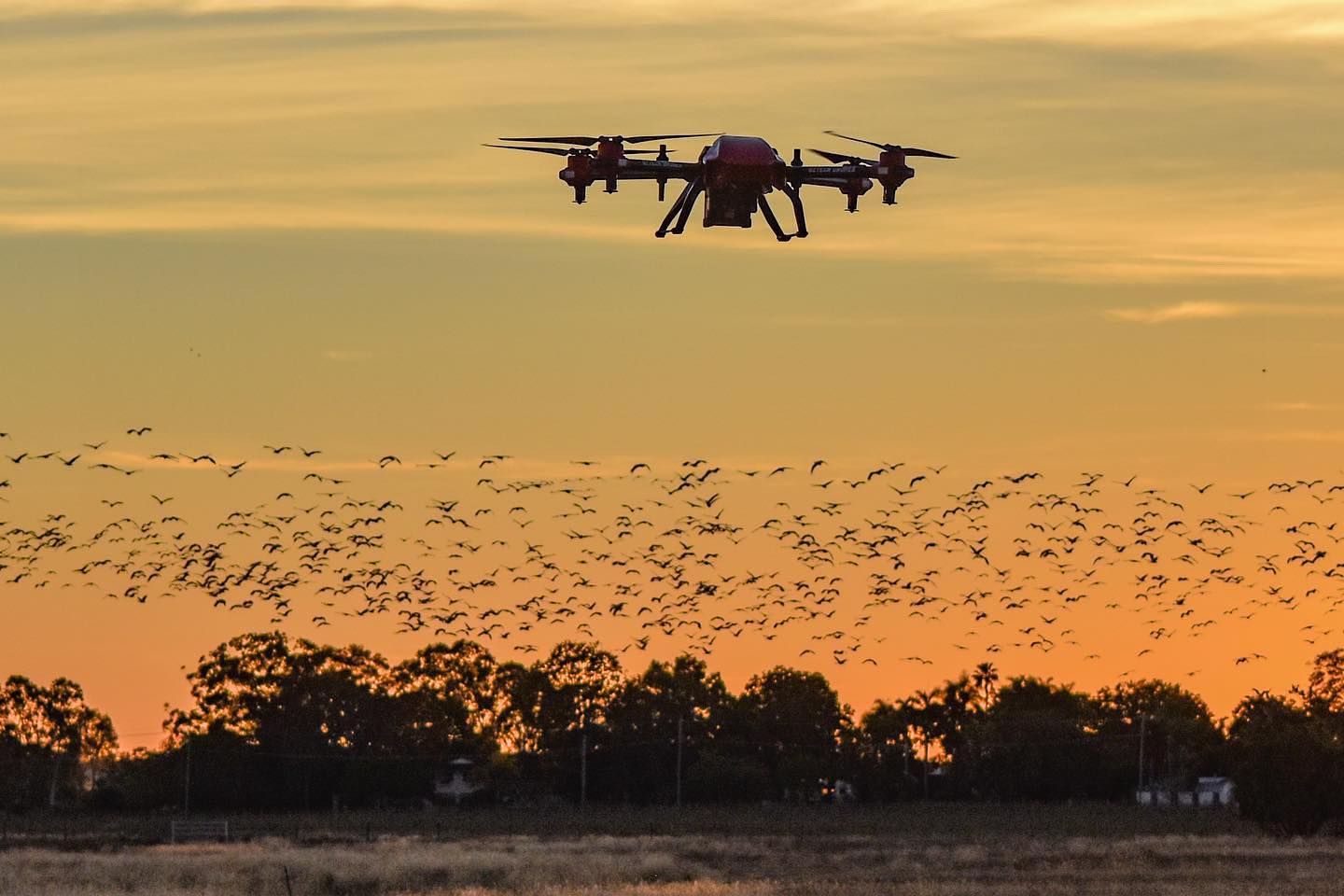- Home
-
Products
- News
- About
- Become a Distributor
Global - English

Have you heard that drones can be used for bird control on farms? In Queensland, Australia, some sweet potato fields suffered from significant damage from thousands of birds devouring crops. Luckily, drones have provided a humane solution to move these birds off the sweet potato crops to eliminate the potential for more serious damage.

Drone as a new tool for bird deterrence (source: Oztech Drones)
Farming has transformed the natural landscape over millennia. According to National Geographic, over 40% of the world's land area is under agricultural use, which is also served as major habitats for wildlife, with birds being one of the species most reliant on farmland ecosystem.
Feeding on agricultural pests like rodents and insects, soaring birds act as natural pest controllers for food crops, and this makes them the friends of farmers......in most occasions. Due to climate change and the loss of natural habitats, birds threat has become the third major biological hazard in agriculture followed by pests and weeds. In some places, birds are even competing with human for their livelihood.
Why We Have to Drive Birds Away from Farms?
•Birds could ruin harvest to feed their hunger, as they have large appetite to devour about one-fifth of their own weight daily with ease, disrupting native plants and causing a significant yield loss to farmers.

Sweet potatoes damaged by birds (source: Oztech Drones)
•Bird poop can be dangerous to farming equipment. The uric acid in bird droppings is corrosive to metal, wood, and vehicle paint, which might make the farm equipment malfunctioned and damage farmhouses when it accumulates to certain amount.
• Birds can be carriers of several diseases such as Avian Influenza, and people can be infected by breathing in dust, drinking water, or consuming poultry contaminated by bird or their faeces.
Five Main Measures for Bird Deterrence
Current approaches of reducing bird threat to crops are followings:
•Chemical repellents: mostly non-toxic and non-lethal chemical agent applied in field through aerial spraying or fogging.
•Physical frightening devices: bird spikes, bird netting, sonic devices, bird predators and aerial machinery, etc are introduced to prevent birds on farm.

Traditional way to scare birds - scarecrow
•Decoy crops: some farmers choose to plant decoy crops adjacent to their fields to lure birds away from the main crops. This can save the main crops from the mouths of birds without using any chemicals, and it is considered a more eco-friendly way for bird control.
•Habitat management: initiatively provide year-round food supplies as well as roosting and nesting sites in particular area of the farm. Grow plant species to attract amphibians and insects to feed the birds during nesting season.
•Altered agricultural practices: farmers are suggested to change crop type and farm practices from year to year, which prevents a constant patronize by flocks of birds. Some crops like rice, corn and sunflower appear to be more preferred by birds over other crops.

Bird flocks on the field is a threat to crops (source: Oztech Drones)
New Approach Occurred: Drone Repelling
In some countries, farmers suffered from bird damage are now turning to their agricultural drones for bird repelling. Not limited to spraying, drone is a new deterrent tool since they can move agilely in the air and approach the birds in unpredictable pattern with a loud propeller humming to simulate a real hunting raptor.
Another method is to equip the drone with a sonic module, which makes the drone blast out a variety of menacing sounds or distress bird calls to scare the flocks. And drones cause no harm to animals when they fly over bird hot spots.